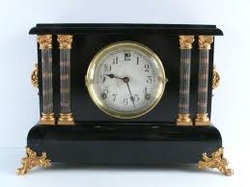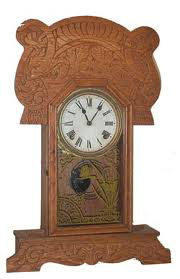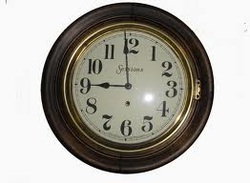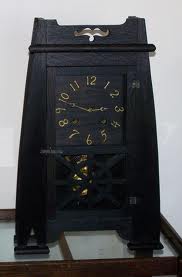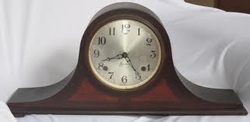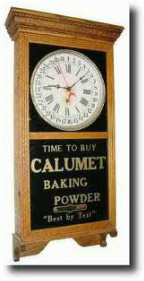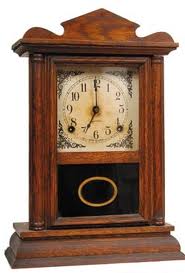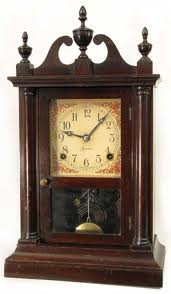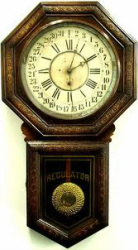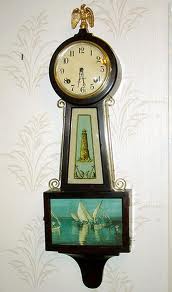The Sessions Clock Company
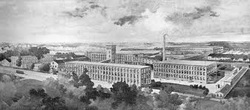
The Sessions Clock Company ("Sessions") was one of several notable American clock companies centered in Connecticut. The E Ingraham Clock Company, the New Haven Clock Company, the Seth Thomas Clock Company, Sessions and its predecessor E.N. Welch Company, and the Waterbury Clock Company collectively produced most of the mechanical clocks made in America between the early 19th century and 1950.
At the turn of the 20th century, the E. N. Welch clock-making firm was struggling. Elisha Welch had died after having turned the business over to his son-in-law. The company was focused on producing high quality clocks at close of the 19th century and the financial depression of 1893 pushed them into bankruptcy. They used a local foundry to produce their castings. The foundry owner's son, William E. Sessions, took an interest in horology and, along with other Sessions family members, bought controlling interest in the E. N. Welch Company. In 1903, the firm’s name was changed and the Sessions Clock Company was organized. Under William's management, the firm produced all components of their line of clocks, including movements, cases, dials, artwork and castings.
The remaining stock of movements, cases and other materials from E. N. Welch were not simply discarded, they were used in manufacturing the Sessions clocks until all Welch marked parts and supplies were gone. Consequently, There are transitional Welch/ Sessions clocks that at first glance appear to be a later marriage of parts which in fact were actually sold that way.
Between 1903 and 1933, Sessions produced 52 models of mechanical clocks, ranging from Advertisers, large and small clocks with logos of various businesses, to wall, or regulator clocks, and shelf or mantle clocks, designed for the home. Many of the Session clocks from this period are prized by collectors.
In 1930, the company expanded to produce electric clocks and timers for radios, while continuing to produce traditional brass mechanical movements. Beginning at the end of World War II, Sessions "W" Model (electric) was widely used by various casting companies for their clocks. The dial of the "W" Model read "Movement by Sessions". In the early 1950s, Sessions began to produce timers for television.
In 1956, Sessions was absorbed by a company interested mainly in their timing devices. In 1959, William K. Sessions, grandson of William E. Sessions left the Sessions Clock Company and formed the New England Clock Company. In 1960, one of the Sessions Clock buildings was sold to the Bristol Instrument Gears Company.
Kept as the Sessions Company, the new owners ran the operation until 1969 when changes in the market forced the Sessions Company into liquidation. In 1970, the remaining buildings were sold to Dabko Industries, a machine parts manufacturer.
At the turn of the 20th century, the E. N. Welch clock-making firm was struggling. Elisha Welch had died after having turned the business over to his son-in-law. The company was focused on producing high quality clocks at close of the 19th century and the financial depression of 1893 pushed them into bankruptcy. They used a local foundry to produce their castings. The foundry owner's son, William E. Sessions, took an interest in horology and, along with other Sessions family members, bought controlling interest in the E. N. Welch Company. In 1903, the firm’s name was changed and the Sessions Clock Company was organized. Under William's management, the firm produced all components of their line of clocks, including movements, cases, dials, artwork and castings.
The remaining stock of movements, cases and other materials from E. N. Welch were not simply discarded, they were used in manufacturing the Sessions clocks until all Welch marked parts and supplies were gone. Consequently, There are transitional Welch/ Sessions clocks that at first glance appear to be a later marriage of parts which in fact were actually sold that way.
Between 1903 and 1933, Sessions produced 52 models of mechanical clocks, ranging from Advertisers, large and small clocks with logos of various businesses, to wall, or regulator clocks, and shelf or mantle clocks, designed for the home. Many of the Session clocks from this period are prized by collectors.
In 1930, the company expanded to produce electric clocks and timers for radios, while continuing to produce traditional brass mechanical movements. Beginning at the end of World War II, Sessions "W" Model (electric) was widely used by various casting companies for their clocks. The dial of the "W" Model read "Movement by Sessions". In the early 1950s, Sessions began to produce timers for television.
In 1956, Sessions was absorbed by a company interested mainly in their timing devices. In 1959, William K. Sessions, grandson of William E. Sessions left the Sessions Clock Company and formed the New England Clock Company. In 1960, one of the Sessions Clock buildings was sold to the Bristol Instrument Gears Company.
Kept as the Sessions Company, the new owners ran the operation until 1969 when changes in the market forced the Sessions Company into liquidation. In 1970, the remaining buildings were sold to Dabko Industries, a machine parts manufacturer.
